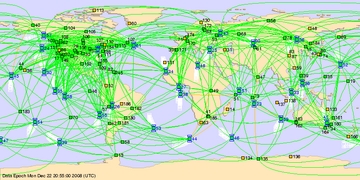
The NASA Spinoff
"As a result of a 1958 congressional mandate, NASA, in 1962, created the Technology Utilization Program. It was supported by Technology Utilization Offices at each of the field centers and four Industrial Applications Centers (IACs). The number of IACs grew rapidly to seven by the early 1970s and ten in the early 1980s.
Early studies of Tech Briefs, the publication dedicated to informing the scientific community about available NASA technologies, and ongoing requests received for supporting information, indicated a strong need in the private sector for new technology to aid in the development of commercial products and services.
When spinoff products began to emerge from space technologies, NASA considered the possibility of an annual report to present at congressional budget hearings. The result was a black and white "Technology Utilization Program Report", published in 1973, followed by another one in 1974. The technologies in these reports created interest in the technology transfer concept, its successes, and its use as a public awareness tool. The reports generated such keen interest by the public that NASA decided to make them into an attractive publication. Thus, the first four-color edition of Spinoff was published in 1976.
Each year since, a new issue has highlighted the transfer of NASA technology to the private sector. The Agency distributes copies to politicians, economic decision makers, company CEOs, academics, professionals in technology transfer, the news media, and the general public.
NASA's Spinoff publication accomplishes several goals. First, it is a convincing justification for the continued expenditure of NASA funds. It serves as a tool to educate the media and the general public by informing them about the benefits and dispelling the myth of wasted taxpayer dollars. It reinforces interest in space exploration. It demonstrates the possibility to apply aerospace technology in different environments. It highlights the ingenuity of American inventors, entrepreneurs, and application engineers, and the willingness of a government agency to assist them. And finally, it continues to ensure global competitiveness and technological leadership by the United States." ... more
|















 - Astronautic
- Astronautic - Astronomy
- Astronomy - Space Astronomy
- Space Astronomy

